My current goal is to change the font-style according to my UX designers wishes. Ideally I want to change the default Font for the entire app. While attempting to update the default font, I noticed, that I was unable to update any font even, font family directly on a single textblock.
I've tried following method that this post describes. I do believe this will help med change the default font. It seems the font family setter itself is the problem. leavening me to believe I'm doing something wrong with the source.
Tried writing the source the following ways:
<FontFamily x:Key="Helvetica">"SolutionName":///"ProjectName"/Assets/HelveticaNeueRegular.ttf#Helvetica</FontFamily>
Also tried the following source, this works with multiple of my resource dictionaries:
<FontFamily x:Key="Helvetica">Assets/HelveticaNeueRegular.ttf</FontFamily>
And finally i've tried the following source method, this I might have done right as i don't completely understand it:
pack://application:,,,/MyAssembly;component/Fonts/#CustomFontName
For the sake of just making it work, and then cleaning later, I've placed these files in the main project. I've also tried both the buildactions None and Content
The way i tested if this works, to have a page with textblocks in a stackpanel writing out the alphabet, and using FontFamily={StaticResource Helvetica} with a stackpanel also referencing the font source directly.
Finally I've tried using other fonts to see if the font itself was the problem (did not work either), and also tried removing "Segoe UI" (The default winui 3 font) from windows, which proved not possible as it is a system font.
Any help is greatly appreciated.
